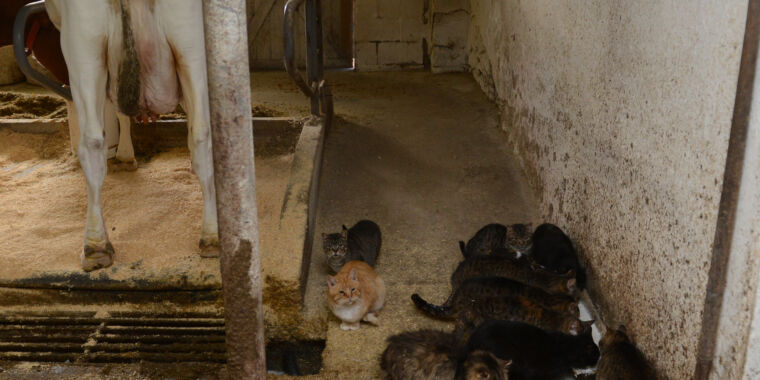Introduction to H5N1 Bird Flu Spread to Mammals
On March 16, cows on a Texas dairy farm exhibited signs of an unidentified illness, later identified to be H5N1 bird flu. The cows displayed nonspecific symptoms, experienced a sharp decline in milk production, and produced thick, creamy yellow milk. Subsequently, the cats on the farm that consumed the sick cows’ raw milk fell ill. While the cows largely recovered, the cats faced a more dismal fate. They displayed a range of severe symptoms, including mental depression, stiff body movements, coordination loss, circling, excessive eye and nasal discharges, as well as blindness. Shockingly, by March 20, over half of the farm’s 24 cats succumbed to the flu.
Research Findings and Insights
A study recently published in the journal Emerging Infectious Diseases showcases the grim discovery made by researchers in Iowa, Texas, and Kansas. The study revealed that the infected cats harbored H5N1 in not only their lungs but also in vital organs such as the brain, heart, and eyes. This pattern mirrors results observed in cats intentionally infected with H5N1 in laboratory settings, also known as highly pathogenic avian influenza virus. However, on the Texas dairy farm, these findings serve as a foreboding indicator of the potential for transmission of this perilous and evolving virus.
According to the researchers, the primary source of fatal infections in the cats was the contaminated milk from the sick cows. Genetic evidence demonstrated striking similarities between the cows, their milk, and the infected cats, suggesting the virus spread from mammal to mammal within the farm. While it remains plausible that the cats contracted the illness from consuming infected wild birds, the most conspicuous route of transmission was through the virus-laden milk. The researchers highlighted the urgent need to address cross-species transmission of HPAI H5N1 virus, emphasizing the alarming potential for the virus to proliferate within mammal populations.
Expansion of H5N1 Spread among Mammals
Early reports from the Texas dairy farm pointed towards the escalating ability of the virus to leap to mammals, a notion supported by the rapid spread of the virus in its newfound host. The USDA confirmed the presence of H5N1 in a dairy herd in Texas on March 25, marking the first documented crossover to cows. Subsequently, H5N1 infections have been identified in at least 34 herds across nine states, including Texas, Kansas, Michigan, New Mexico, Idaho, Ohio, South Dakota, North Carolina, and Colorado.
An unsettling development emerged when the Food and Drug Administration detected genetic traces of H5N1 in approximately 20 percent of commercial milk samples. Despite the assurance of milk safety due to pasteurization protocols that are expected to eliminate the virus, the widespread presence of H5N1 among dairy cattle in the country raises significant concerns. The increasing host range of H5N1 has encompassed various unexpected mammalian species, as confirmed by USDA findings in over 200 mammals since 2022, spanning from big cats and seals to bears, foxes, and dolphins.
Implications and Recommendations
The recurrent nature of global HPAI H5N1 outbreaks underscores the escalating threat of the virus and its expanding adaptability in mammalian hosts. In light of these revelations, continuous surveillance of HPAI viruses in domestic animals like cattle is imperative to better comprehend influenza virus evolution, ecology, and avert cross-species transmissions.
As awareness spreads regarding the dangers of H5N1, the consumption of raw cow’s milk must be strictly avoided. Unlike conventional influenza viruses, H5N1 demonstrates capabilities of infecting organs beyond the respiratory system, posing severe health risks. A recent consumer survey from 2019 revealed that a significant portion of adults in the US consumes raw milk, signaling a crucial need for public education and awareness on the potential hazards associated with raw milk consumption.
Image/Photo credit: source url





